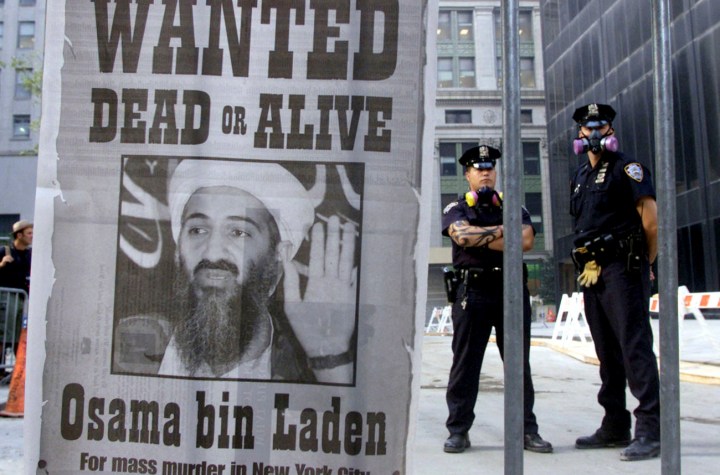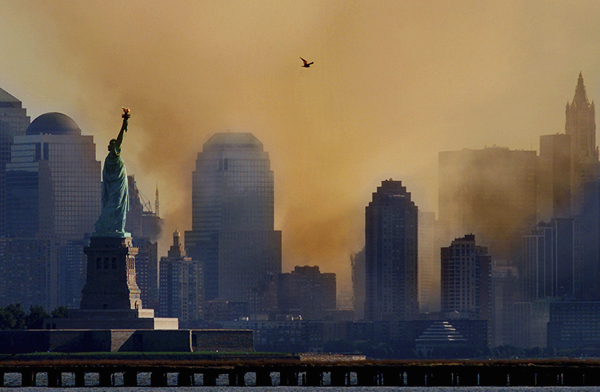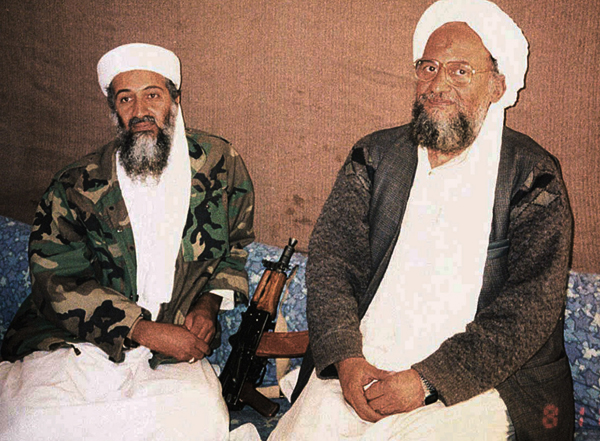Politics
Osama bin Laden, the world’s first truly global terrorist

Even if ever-so-briefly, the death of one man was an event so big that it managed to unite the entire population of what is still the world's biggest superpower. Just who was Osama bin Laden and how did he get to embody all that to which Western Civilisation is so vehemently opposed? By J BROOKS SPECTOR.
Late Sunday evening, US President Barack Obama had the full attention of people across the US and around the globe to announce that Osama bin Laden had been killed in a quick, violent firefight at a luxurious house in the town of Abbottabad, about 50km north of Islamabad, Pakistan. The house was only a short distance from Pakistan military facilities.
President Obama said in his late-night televised speech: “Tonight, I can report to the American people and to the world that the United States has conducted an operation that killed Osama bin Laden, the leader of al Qaeda, and a terrorist who’s responsible for the murder of thousands of innocent men, women and children,” adding “Justice has been done.” American officials are now saying Bin Laden was first taken to Afghanistan, and later buried at sea in accord with Islamic religious practice.
A great irony is that Bin Laden was finally found and killed inside America’s erstwhile ally, Pakistan, rather than in Afghanistan where he had first been given sanctuary by the Taliban zealots in the wake of the chaos of their takeover, following the earlier collapse of the Russian-sponsored regime in the early 1990s. Bin Laden’s presence in Afghanistan had been the precipitating cause of the American invasion of that nation after the events of 11 September 2001.

Photo: The port side damage to the guided missile destroyer USS Cole is pictured after a bomb attack during a refueling operation in the port of Aden in this October 12, 2000 file photo. Al Qaeda leader Osama bin Laden was killed May 1, 2011. in a firefight with U.S. forces in Pakistan and his body was recovered, U.S.President Barack Obama said on May 1, 2011. Besides Sept. 11, Washington has also linked bin Laden to a string of attacks — including the 1998 bombings of American embassies in Kenya and Tanzania and the 2000 bombing of the warship USS Cole in Yemen. REUTERS/Aladin Abdel Naby
Given the almost inevitable comments, in his address, Obama hastened to add, “We must also reaffirm that the United States is not – and never will be – at war with Islam. I’ve made clear, just as President Bush did shortly after 9/11, that our war is not against Islam. Bin Laden was not a Muslim leader. He was a mass murderer of Muslims. Indeed, al Qaeda has slaughtered scores of Muslims in many countries, including our own. So his demise should be welcomed by all who believe in peace and human dignity.”
Osama bin Laden was one of the many sons of a rich, successful Saudi construction magnate. Bin Laden became the iron tip of a kind of rage that channelled Islamic frustration with the power and prestige of the US into acts of high-visibility terror around the globe. His personal anger led to deadly attacks on American embassies in Africa, on a US warship docked in Aden and, of course, most infamously with hijacked airliners on the twin towers of New York City’s World Trade Center, and on the Pentagon. Still another hijacked plane crashed in rural Pennsylvania before it could reach its target presumed to have been the White House or the Capitol Building. Beyond these targets, affiliates of the al Qaeda network or groups inspired by Bin Laden’s rage, are held to be responsible for yet other terror attacks in Madrid, London and on the island of Bali in Indonesia.
But the death toll of al Qaeda’s own attacks may even be dwarfed by the way the violence he guided or inspired led ultimately to the Bush administration’s invasions of Afghanistan and Iraq, and which then changed the way the world came to be shaped into yet another frontline in “the war on terror”. And the cascade of Bin Laden, al Qaeda, and the Iraq and Afghanistan campaigns helped drive a wedge between America and so much of the population of those who live in what we used to call the third world.

Photo: Smoke from the remains of New York’s World Trade Center shrouds lower Manhattan as a lone seagull flies overhead in a photograph taken across New York Harbor from Jersey City, New Jersey, in this September 12, 2001 file picture. Al Qaeda leader Osama bin Laden was killed May 1, 2011, in a firefight with U.S. forces in Pakistan and his body was recovered, President Barack Obama said on May 1, 2011. “Justice has been done,” Obama said in a dramatic, late-night White House speech announcing the death of the elusive mastermind of the Sept. 11, 2001, attacks on New York and Washington that killed nearly 3,000 people. REUTERS/Ray Stubblebine
In the days ahead, there will be a flood of commentary, analysis, observation and prediction. Key among these will be the questions of now what? What impact will his death have on the network he inspired? Will his acolytes and his successors note – or worse – attempt to avenge his death by yet other violent acts? And how will Muslim populations around the world respond to his death and the legacy of his ideas? Will Bin Laden’s passing diminish or enhance the violence with which he came to be synonymous? The US state department has already issued a global travel warning, just in case.
Just short of a decade ago, my family and I were back in Washington DC after half a decade in Japan, en route to our transfer to South Africa. On the morning of September 11, we were finishing up some paperwork in a doctor’s office just before our planned departure later that week. As we were about to leave the office, a woman burst in, screamed, “They’ve bombed the Pentagon!” then ran out and on to the next office down the hall.
We had one child visiting friends across the city and another in downtown Washington at university, and we were house-sitting for friends who had just left on a long-planned vacation to North Africa. And so we were just as confounded as the rest of the world by the question of what to do next – stock up on food and petrol or brace ourselves for some sort of unfathomable Armageddon? Ultimately, like so many others, we spent the next week in front of the television, watching replay after replay of the fall of the Twin Towers while trying to rebook our airline travel to South Africa after the national ban on flights in the aftermath had had a domino effect on the country’s entire transportation system.
After passing through a grim Dulles Airport outside Washington, we transited via Frankfurt Airport where guards holding Uzi-style weapons at port arms were everywhere. A short while after arriving in Johannesburg we went to lunch with a friend and outside the restaurant there already there was a vendor selling electric blue T-shirts festooned with the face of Osama bin Laden on the front – and the iconic image of the Twin Towers on fire and about to collapse. Bin Laden had already become the omnipresent face of the terror his amorphous organisation was taking credit for having caused.
Osama bin Laden was born into a rich Saudi family that ran a major construction company, but he ended his life leading a self-declared holy war against the US. As the founder of al Qaeda, Bin Laden was able to marry a terrorism campaign using modern technologies, together with centuries-old Islamic beliefs. The organisation has proved to be surprisingly resilient and analysts are saying it continues to pose real threats to US interests abroad as well as domestically.

Photo: Osama bin Laden (L) sits with his adviser Ayman al-Zawahiri, an Egyptian reputed to be second in command of the al Qaeda network, during an interview with Pakistani journalist Hamid Mir (not pictured) in this file photo image supplied by the Dawn newspaper on November 10, 2001.REUTERS/Hamid Mir
Osama bin Laden’s father, Mohammed bin Laden, had emigrated as a young man from Yemen, arriving as a penniless labourer in what later became the Kingdom of Saudi Arabia. Mohammed bin Laden had a knack for engineering and found his way into the construction business and, by the 1930s, had become a construction company owner working on palaces for the royal family. He eventually became a favoured contractor for the huge projects the kingdom undertook with its oil riches. Mohammed bin Laden already had multiple wives and many children when he married 14-year-old Alia al-Ghanem, who came from a Syrian family. Alia gave birth in 1957 to a son, Osama, or “young lion” in Arabic.
After a childhood of increasing religious study and piety, Osama entered Jeddah’s King Abdulaziz University where he became a follower of the Muslim Brotherhood. But it took years before his religiosity hardened into a fanaticism that led to his later life as head of al Qaeda.
Over the past decade, Osama bin Laden had eluded a major US manhunt and $25 million reward for help with his capture, but while his group continued to survive, it never came close to achieving its espoused eschatological goals of pushing US troops out of the Middle East and replacing US-backed Arab governments with a new caliphate under Islamic rule.
It apparently was his experience in the 1980s leading an Arab contingent against the Soviet occupation of Afghanistan that further generated his militancy. Then the basing of US troops in the Middle East and deployment in 1990 to oust Iraqi forces from Kuwait, focused Bin Laden’s ire on a view of the US as a domineering, corrosive threat to Islam.
Bin Laden showed special skill in bringing together terrorist elements under the umbrella of his loose movement. His insouciance, even brazenness, in confronting America seemed to have struck a special chord with many in the Islamic world. This allowed him the chance to surround himself with the imagery of the prophet Muhammad. Particularly media savvy for someone hiding in the vastness of Afghanistan’s mountains, his use of the international media helped magnify his message against the West and his metaphorical call for the reestablishment of a long-gone Islamic world order.
Following 9/11, the American-led invasion of Afghanistan cut the recruitment of al Qaeda’s fighters and destroyed the movement’s camps, but he escaped capture and was believed to have gone into hiding in the mountainous tribal territories of north-western Pakistan.
Responding to Bin Laden’s fanaticism and the astounding impact of 9/11 on American society ultimately made opposition to him the defining feature of George Bush’s presidency, with its “global war on terror” and the invasions of Afghanistan and Iraq. The long-term consequences of Osama bin Laden’s fury, the movement he created, the anger into which he tapped and the impact of his works on America and its political system will be analysed and re-analysed for decades. DM
For more, read:
- Obama: Al-Qaida head bin Laden dead in AP;
- Bin Laden Dead, President Obama Says in The New York Times;
- Osama bin Laden is killed by U.S. forces in Pakistan in The Washington Post;
- Osama bin Laden killed: Leader of terrorist group al-Qaeda was 54 in The Washington Post;
- Death of a Failure (Ross Douthat’s column) in The New York Times;
- After Osama Bin Laden… (Nick Kristof’s column in The New York Times);
- Osama Bin Laden Dead – text of US President Obama’s announcement;
- Osama bin Laden Is Buried at Sea in The New York Times.
Main photo: Police stand near a wanted poster of Saudi-born militant Osama bin Laden, printed by a New York newspaper, in New York in this September 18, 2001 file photograph. Al Qaeda leader Osama bin Laden was killed in a firefight with U.S. forces in Pakistan on May 1, 2011, ending a nearly 10-year worldwide hunt for the mastermind of the Sept. 11 attacks. “Justice has been done,” U.S. President Barack Obama declared in a hastily called, late-night White House speech announcing the death of the elusive head of the militant Islamic group behind a series of deadly bombings across the world. REUTERS/Russell Boyce




 Become an Insider
Become an Insider